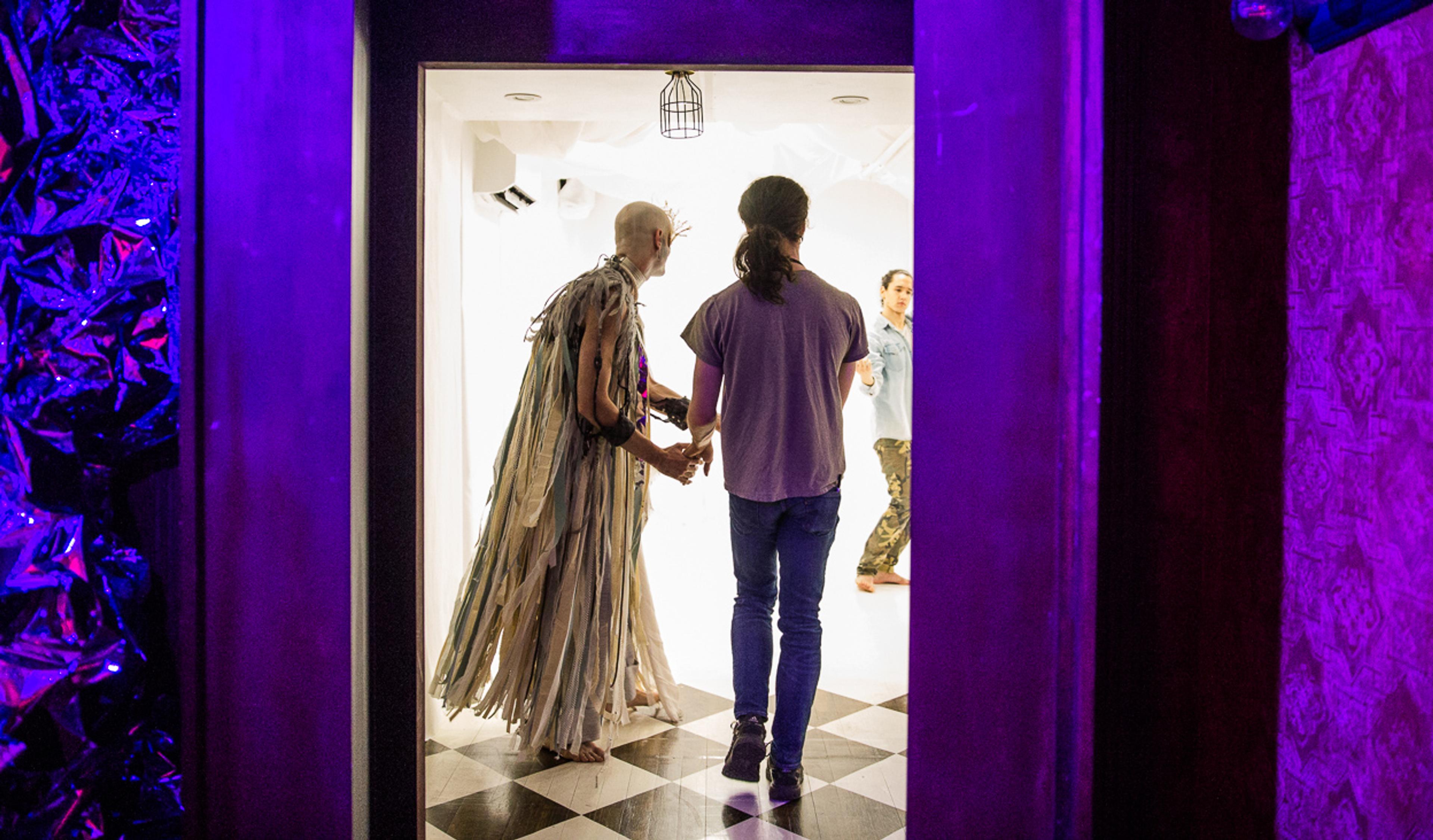
The Mortality Machine. Photography by Zack Filkoff.
Create Body Language
CONCEPT
Human body language is grounded in biology, history, culture, and personality. Many anthropomorphic characters in storytelling media are not fully human: vampires, fairies, witches, angels. And many human characters are not from our reality: ancient civilizations, imagined future civilizations, people living in alternate versions of the present. With shifts of biology come different tools for body language: Might a vampire learn to accentuate facial expressions with hand gestures or exceptionally expressive eye movements in order to hide their teeth behind closed lips? With shifts of time period or culture come different rules for body language: Is it an honoring gesture or totally bizarre to wash a guest's feet for them? The believability of a story's character comes so much from how the character behaves. In order to bring truth to a story that takes audiences out of our reality, I craft the physical behavior of characters to match their alternate nature and setting.
PROJECT
Even before I could entertain the development of The Mortality Machine's characters, I reckoned with the task to bring movement design to the production's artform, an American derivative of Nordic Larp. Larp is a collective storytelling artform that features the hero's journeys of its "participants" or "players", who both dictate and are the audience to their own story. One can think of Larp as the experience of stepping inside of a movie, where you are one of the characters in the movie with free will to influence the other characters and make decisions about where to go, what to do, who to spend time with, etc., such that the whole story is affected by your decisions. This American derivative of Nordic Larp formalizes Larp into a theatrical experience where venue, costuming, and other theatrical elements aid the players' sensation that what their characters are experiencing is real. My task was to create participant and facilitator (performer) movement design that made the fictional experience feel real.
I needed to design movement that players and facilitators could not only perform but also use to interact with each other. Plus, I needed my design to enable participants to learn movements from the facilitators on the spot and in ways that fit into the story. Relying on a mixture of how choreography is taught in a dance setting, how people learn to partner dance with each other, and game mechanics of introducing repetition to play, I developed a way to invite and escalate participants' engagement in the movement design over the course of the larp.
Then, I could define the characters' physical vocabulary according to the type of creature they were. Ultimately, I used stylized dance to define fantastical traits of the facilitators' characters, and I codified distinct physical gestures into the performers' movement vocabulary to establish the fantastical qualities of interactions between them and the participants.
CREDITS
Producer: Sinking Ship Creations
Project: The Mortality Machine Immersive Theater Production
Writer + Director: Ryan Hart
Choreographer + Co-Director: Lara Marcin
Game Writer: Tommy Honton
Project: The Mortality Machine Immersive Theater Production
Writer + Director: Ryan Hart
Choreographer + Co-Director: Lara Marcin
Game Writer: Tommy Honton
About The Mortality Machine
The writer and director of The Mortality Machine talks about the show and the process of making it while clips of rehearsal and previews of the production are shown.
Performers Daan Bootsma , Isaac J. Conner , Jennifer Suter, Jessy Smith , Julia Jurgilewicz , Kelsey Rondeau , Rafael Svarin , Rita McCann , Ziiomi Law
The Mortality Machine's group choreography at work
In the show venue's all-white back room, dancers rehearse some of their group choreography.
The tech booth's view of a "happy" ending
Performers Daan Bootsma, Isaac J. Conner, Jennifer Suter, Jessy Smith , Julia Jurgilewicz, Kelsey Rondeau, Rafael Svarin, Rita McCann, Ziiomi Law
Make Music Visceral
Lara Marcin
©2024 Lara Marcin / All rights reserved